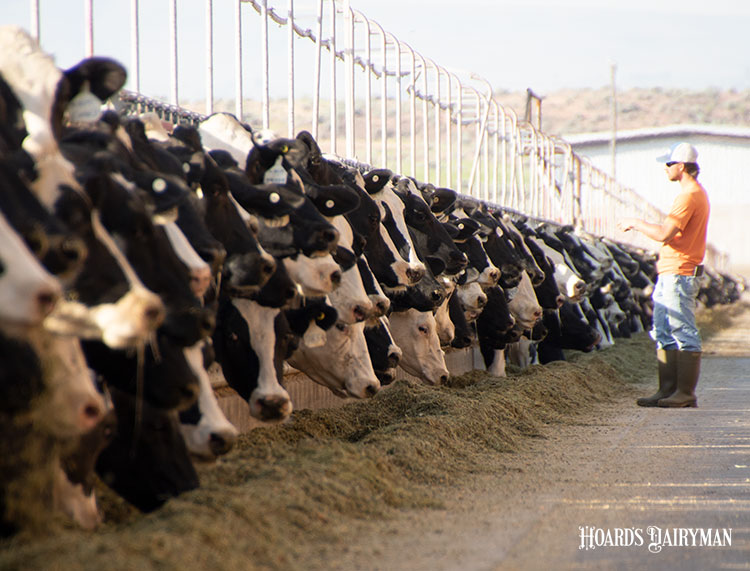
A high-producing dairy cow needs to consume a lot of feed, but there is only so much time in the day. Cows must be able to eat enough feed to meet their nutrient needs in a certain time frame to allow for other important daily activities, including milking and resting.
In a presentation about forage quality and particle length at the Midwest Forage Association’s annual symposium, Rick Grant also discussed eating time. The president of the Miner Institute shared that in a cow’s perfect world, it should be able to consume its dry matter intake requirement in three to five hours per day. This goal can be difficult to reach if there are challenges present, such as poor feed quality, competition at the bunk, or restricted feed availability.
“If the cow has to go outside of that three-to-five-hour boundary, there is going to be a penalty to pay, probably in rumen conditions and resting time, neither of which are good for the cow,” Grant said.
Grant talked about adjusting particle size as a tool to improve feed quality when a crop is drier than desired or is not at the ideal maturity. While many may think that smaller particle size would increase rumination time, Grant said it actually has much more influence on eating time.
Whether a cow is fed a coarse diet or a fine one, by the time the cow swallows the feed, the particle size will be pretty uniform. That’s because the cow will take time standing at the bunk chewing the feed to make smaller particles. The problem is that this takes away from that precious resting and rumination time.
“Eating time and resting time have to be in balance,” Grant said. “Giving up resting time is something you never want to make a cow do.”
Cows can ruminate standing up or lying down, but recent data shows that rumen pH is higher and more desirable when a cow ruminates when lying down. Grant said this puts the importance of resting time in a different perspective. “I now believe rumination ought to occur when the cow is lying down,” he noted. Ideally, he said a cow would spend 89% or more of its rumination time lying down.
To hit this eating time target, Grant said to first and foremost, make sure to be feeding high-quality forage by meeting industry recommended digestibility standards. Smaller particle size can help improve quality, but Grant did caution about chopping feed too finely. “Cows still need effective fiber,” he reminded the audience.
Feed should be available all day, every day. He also said to avoid overcrowding to ensure cows have access to resting space.
Grant reiterated that eating time, resting time, and rumination time are all linked. “Never, ever do anything in the management routine or the feeding routine that’s going to make a cow unlink those. Nothing good can come from that,” he stated.








